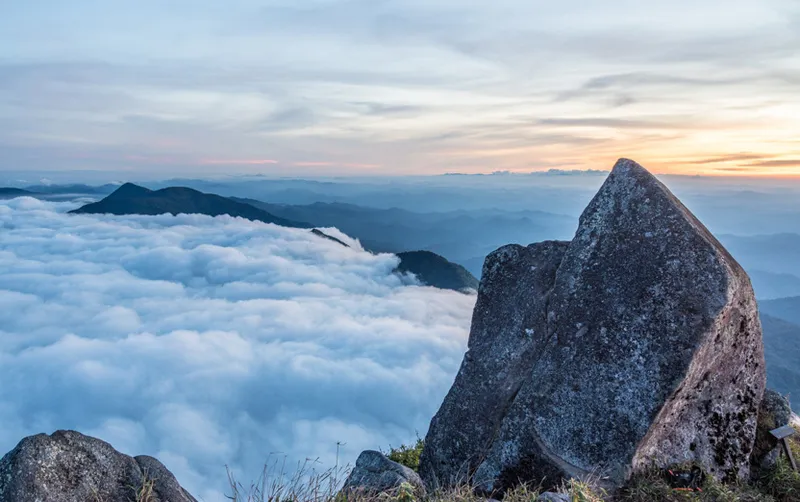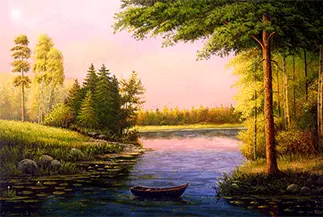
Rating: 3.9/5 (7 votes)
Kamphaeng Phet attractions
Attractions in Thailand
Operating day: Daily
Operating time: 24 Hour
Mae Wong National Park is one of the most significant and remarkable national parks in upper central Thailand, located across two provinces: Kamphaeng Phet and Nakhon Sawan. Covering an area of approximately 558,750 rai, or 894 square kilometers, it is considered the most pristine and well-preserved portion of the Western Forest Complex, stretching from Tak Province to Kanchanaburi Province. To the north, the park borders Khlong Lan National Park, to the south it adjoins Huai Kha Khaeng Wildlife Sanctuary in Uthai Thani Province, and to the west it meets Umphang Wildlife Sanctuary in Tak Province. This extensive forest connection makes Mae Wong National Park a vital habitat for rare wildlife and a highly diverse ecosystem.
Mae Wong National Park was officially declared a national park on September 14, 1987. Most of its forests consist of mixed deciduous forest, evergreen forest, and dry dipterocarp forest. The park hosts a high biodiversity, both in terms of flora and fauna. Valuable and economically important tree species found here include teak, rosewood, makha, red resin, dipterocarp, and rattan. These forests not only provide oxygen and water retention but also serve as habitats for rare wildlife.
The park’s wildlife is incredibly diverse, with several species considered endangered. Elephants, gaur, tigers, deer, muntjac, bears, clouded leopards, and a variety of birds inhabit the area. Some bird species are extremely rare in Thailand, including the greater black-and-white hornbill, red-necked hornbill, crested serpent eagle, green-eared barbet, and long-tailed broadbill. The conservation and management of Mae Wong’s forests are therefore crucial for maintaining biodiversity and ecological balance.
The best time to visit Mae Wong National Park is during the winter months, from November to February, when the weather is cool and comfortable and the landscapes are at their most picturesque. The park offers a wide range of attractions for nature lovers and adventure seekers. Pha Koi Nang Rapids is a large rock formation in the Khlong Khlung River, located approximately 1,800 meters from the park headquarters. From this rapids, visitors can hike about 350 meters to reach Pha Koi Nang Waterfall, a small waterfall with four tiers. The surrounding area is suitable for camping, offering a serene environment to enjoy the sounds of the flowing water.
Another must-visit site is Kew Krating Viewpoint, located at kilometer 81 along the Khlong Lan–Umphang Road, about 16 kilometers from the park headquarters. This cliff provides a panoramic view of the surrounding forest and is ideal for camping. It is an excellent location to watch the sunrise or sunset amidst the pristine forest.
Chong Yen is the highest point along the Khlong Lan–Umphang Road, about 28 kilometers from the park headquarters, at an elevation of 1,340 meters above sea level. The area is cool throughout the year, with gentle breezes and frequent mist. The average temperature is around 20 degrees Celsius. Visitors can enjoy beautiful sunsets and the refreshing coolness of the mountainous forest. The surrounding terrain is evergreen forest, home to rare orchids, ferns, and black trees, as well as several rare bird species such as red-necked hornbill, Burmese hornbill, long-tailed broadbill, and great hornbill with yellow crests. Access to Chong Yen requires preparation, including bringing plastic sheets, warm clothing, flashlights or lanterns, insect repellent, and garbage bags, as there is no electricity or cooking facilities. The park also regulates hiking times for safety, specifying ascent and descent schedules.
Mokoju Peak is the highest summit in Mae Wong National Park and in the Western Forest Complex, standing at 1,964 meters above sea level. The name “Mokoju” comes from the Karen language, meaning “as if it will rain.” The summit is often shrouded in clouds and experiences cold weather year-round. Hiking to Mokoju Peak takes about five days round-trip, with overnight camping at designated forest points. The trail is steep, with inclines of more than 60 degrees, requiring visitors to be physically prepared. Hikers should study the trail and weather conditions in advance and coordinate with park officials for guidance and a local guide. The park opens the peak for trekking only from November to February each year.
Mae Krasa Waterfall is the largest waterfall in the park, with nine tiers and a height of 900 meters. It is located about 18 kilometers from the park headquarters and requires a 3–4 day round-trip hike. Mae Rewa Waterfall is located approximately 21 kilometers from the headquarters, featuring five beautiful tiers and taking about two days to hike round-trip. Nearby, Mae Ki Waterfall also originates from the Thanon Thongchai mountain range, and accessing these waterfalls requires hiking preparation and stamina.
Nang Nuan Waterfall and Tiger Waterfall are located around kilometer 99 on the Khlong Lan–Umphang Road. Nang Nuan requires a descent of about 200 meters, while Tiger Waterfall is about 1 kilometer from the trailhead. Visitors must notify park officials before entering both waterfalls. Additionally, the park offers nature trails for education, including a 6.4-kilometer trail at Nang Nuan Waterfall and the Thanbunmee Waterfall trail, which takes around two hours. These trails allow visitors to study plant species and rare birds inhabiting the forest.
Mae Wong National Park is especially popular for long-distance trekking. The park organizes annual schedules for long-distance hikes to maintain safety and preserve the natural environment. Visitors are required to strictly follow park rules and contact officials to reserve hiking times and receive advice on equipment and preparation.
The park provides accommodations and camping sites for visitors, but travelers must bring their own tents, sleeping gear, warm clothing, and cooking equipment, as some areas have no electricity or shops. The park is accessible from Bangkok via Highway 1, turning left onto Highway 1117 (Khlong Lan–Umphang Road) and traveling approximately 19 kilometers from the Khlong Lan intersection to reach the park headquarters. Alternatively, travelers can use Highway 1072 (Lat Yao–Khlong Lan) and turn left at Khlong Lan Market to reach the park, or take an air-conditioned bus from Bangkok to Khlong Lan Market and hire a local vehicle to the park.
Mae Wong National Park is not only a major destination for nature tourism but also a center for biodiversity and ecological research. Preserving its forests and wildlife is crucial for maintaining ecological balance and supporting research on rare plants and animals. Visitors not only experience the beauty of nature but also learn the importance of conservation.
Trekking in Mae Wong provides an unforgettable experience, whether for short hikes to waterfalls and viewpoints or long treks to Mokoju Peak. The diversity of natural landscapes, wildlife observation, and challenging trails make the park a top destination for both local and international travelers. It is also a site for environmental education and scientific study, helping visitors understand the importance of forest and wildlife conservation.
Visitors can contact Mae Wong National Park headquarters at kilometer 65 on the Khlong Lan–Umphang Road, Khlong Lan District, Kamphaeng Phet 62180, phone numbers 0 5576 6436, 0 5576 6024, 0 5576 6027, or by mail at P.O. Box 29, Khlong Lan District, Kamphaeng Phet 62180. Additional information can also be obtained from the Department of National Parks, Wildlife and Plant Conservation in Bangkok.
With its diverse ecosystems, rich forests, and challenging trails, Mae Wong National Park is a must-visit for anyone who loves nature, wildlife, trekking, and waterfalls. Visitors not only enjoy relaxation and the beauty of pristine forests but also gain awareness of the importance of conserving Thailand’s natural heritage for future generations.
Comment
| Keyword (Advance) |
 Region
Region
|





 Category:
Category:  Group:
Group: